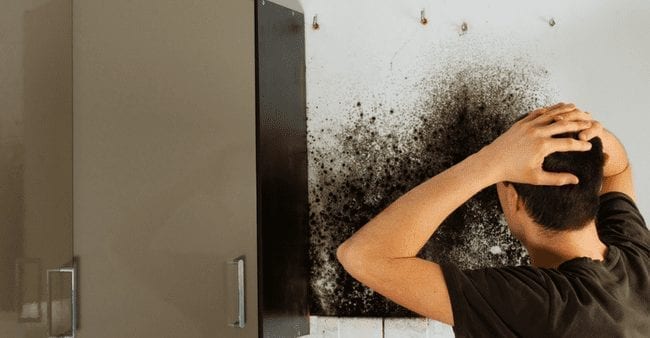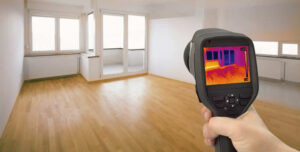This great article which follows pertaining to Detecting hidden plumbing leaks is exceptionally engaging. Don't miss out on it.

Early discovery of leaking water lines can reduce a possible disaster. Some tiny water leaks might not be visible.
1. Examine the Water Meter
Every house has a water meter. Inspecting it is a proven way that helps you uncover leakages. For beginners, switch off all the water resources. Ensure nobody will certainly purge, make use of the faucet, shower, run the cleaning maker or dish washer. From there, most likely to the meter and also watch if it will certainly transform. Since no one is utilizing it, there should be no movements. That suggests a fast-moving leakage if it moves. If you detect no modifications, wait an hour or 2 and examine back once more. This means you may have a sluggish leakage that could even be below ground.
2. Examine Water Consumption
If you detect unexpected adjustments, despite your usage being the very same, it means that you have leaks in your plumbing system. An unexpected spike in your expense shows a fast-moving leakage.
On the other hand, a consistent rise every month, even with the same practices, shows you have a slow leakage that's additionally gradually intensifying. Call a plumber to extensively inspect your building, particularly if you really feel a warm location on your floor with piping below.
3. Do a Food Coloring Test
30% comes from commodes when it comes to water consumption. Test to see if they are running effectively. Decline specks of food color in the storage tank and also wait 10 minutes. There's a leakage between the container and bowl if the color somehow infiltrates your bowl during that time without flushing.
4. Asses Exterior Lines
Do not neglect to inspect your outdoor water lines too. Test spigots by attaching a yard pipe. Should water permeate out of the connection, you have a loosened rubber gasket. Replace this as well as make sure all links are limited. It will certainly aid obtain it skillfully took a look at as well as maintained every year if you've got a lawn sprinkler system. One little leakage can squander tons of water as well as increase your water costs.
5. Check as well as Evaluate the Situation
Home owners must make it a practice to check under the sink counters and also even inside closets for any type of bad odor or mold and mildew growth. These 2 red flags suggest a leakage so timely attention is needed. Doing routine evaluations, also bi-annually, can save you from a significant issue.
More importantly, if you understand your home is already old, keep a watchful eye on your heating systems, hose pipes, pipes etc. Look for discolorations and also damaging as the majority of pipelines and home appliances have a life expectancy. They will additionally naturally deteriorate as a result of tear and also use. Do not wait for it to escalate if you presume dripping water lines in your plumbing system. Call an expert plumber right away so you do not wind up with an awful mess in your home.
Early discovery of leaking water lines can reduce a potential catastrophe. Some little water leaks might not be visible. Examining it is a surefire method that helps you find leaks. One little leakage can squander heaps of water as well as increase your water costs.
If you think leaking water lines in your plumbing system, do not wait for it to rise.
WARNING SIGNS OF WATER LEAKAGE BEHIND THE WALL
PERSISTENT MUSTY ODORS
As water slowly drips from a leaky pipe inside the wall, flooring and sheetrock stay damp and develop an odor similar to wet cardboard. It generates a musty smell that can help you find hidden leaks.
MOLD IN UNUSUAL AREAS
Mold usually grows in wet areas like kitchens, baths and laundry rooms. If you spot the stuff on walls or baseboards in other rooms of the house, it’s a good indicator of undetected water leaks.
STAINS THAT GROW
When mold thrives around a leaky pipe, it sometimes takes hold on the inside surface of the affected wall. A growing stain on otherwise clean sheetrock is often your sign of a hidden plumbing problem.
PEELING OR BUBBLING WALLPAPER / PAINT
This clue is easy to miss in rooms that don’t get much use. When you see wallpaper separating along seams or paint bubbling or flaking off the wall, blame sheetrock that stays wet because of an undetected leak.
BUCKLED CEILINGS AND STAINED FLOORS
If ceilings or floors in bathrooms, kitchens or laundry areas develop structural problems, don’t rule out constant damp inside the walls. Wet sheetrock can affect adjacent framing, flooring and ceilings.
https://www.servicemasterbyzaba.com/blog/how-to-detect-water-leakage-in-walls/

We had been brought to that article about Locating water leaks from an associate on a different domain. In case you appreciated our blog posting please do not forget to share it. Thanks a bunch for your time. Visit us again soon.